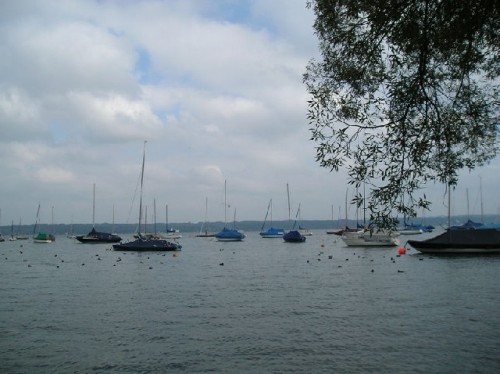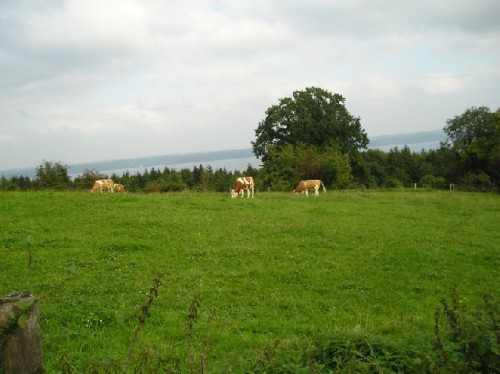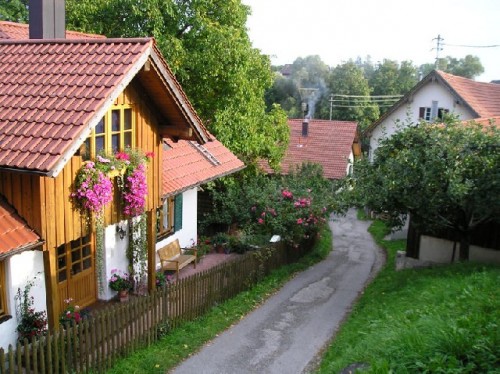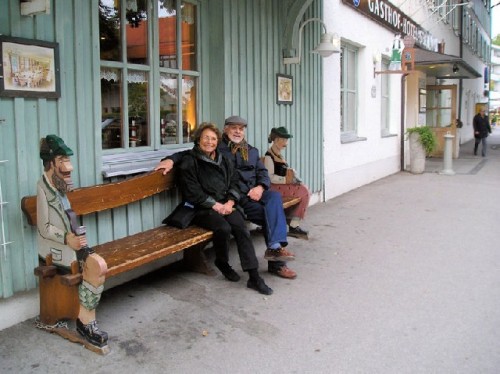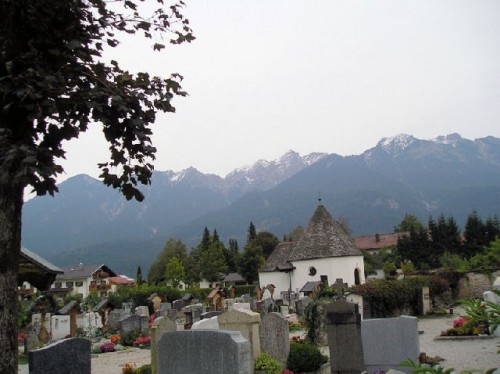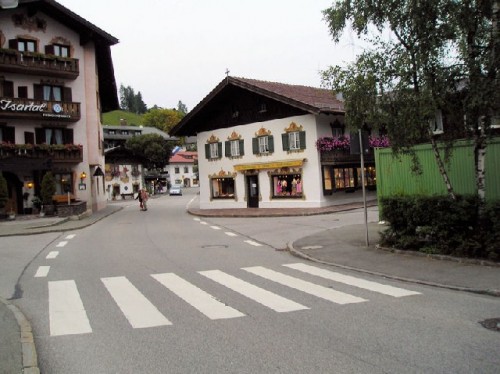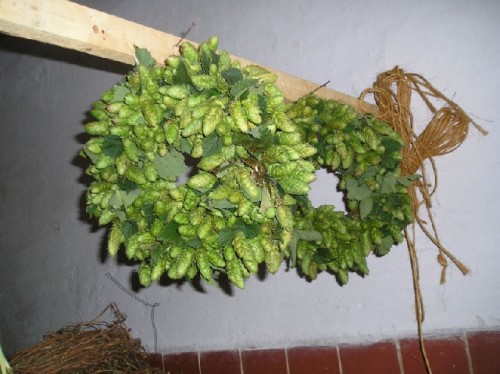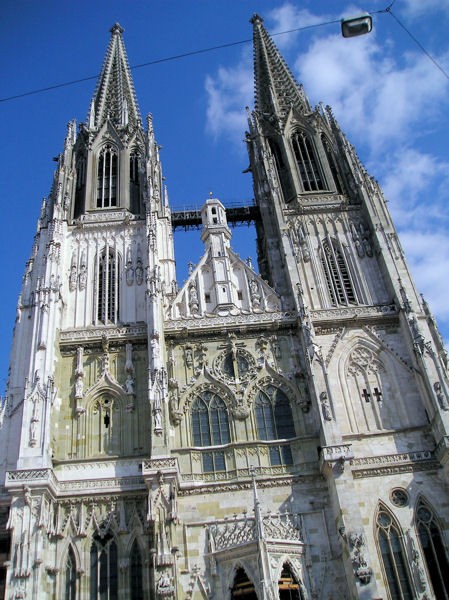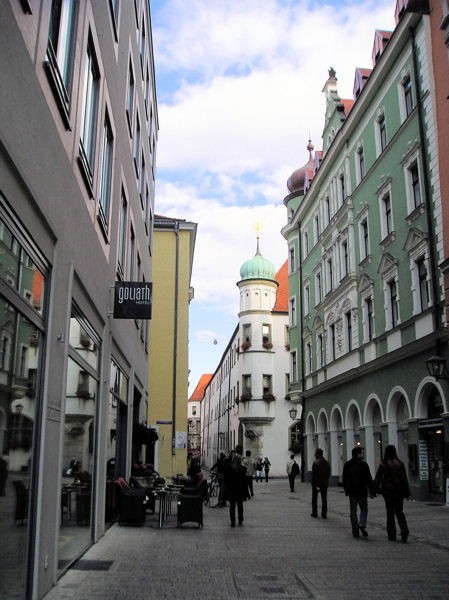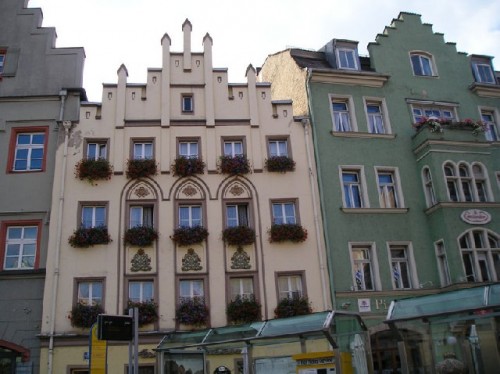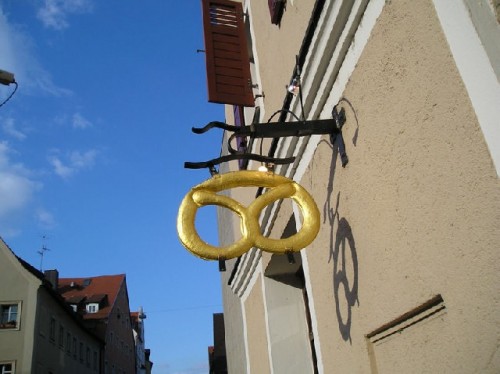Bavaria: Part Two
Starnberg,Herrsching,Glentleiten,Murnau,Garmisch and Regensburg
By: Zeren Earls - Nov 18, 2008
Alpine foothills
Alpine foothills are within driving distance of Munich and offer panoramic scenery of lakes and mountains dotted with charming towns. Our first drive was an afternoon excursion to Starnberg on the Starnberger See (Lake), 20 km. south of Munich. On the way there, we passed by Tutzing, where Brahms composed three pieces. A stone relief of the composer's head sits in the shade of a tree by the road.
The chilly fall weather had already descended over the lake, as evidenced by the many covered sailboats on the Starnberger See. Bundled up, we walked by the water's edge, admiring the multi-hued foothills at a distance. We visited a church sited high in the meadow, overlooking the lake. The white-washed church, with an onion-domed tower, a well-groomed cemetery, and cows grazing nearby, made beautiful pastoral scenery.
The Ammersee was our next stop. A passenger steam boat, churning its side wheels slowly, approached the landing at Herrsching. A beautiful castle nearby beckoned for attention. We stopped in a specialty shop, where I was introduced to Renke, the local white fish, which is customarily eaten smoked. Naturally our dinner that evening featured smoked Renke.
The excursion to the Glentleiten Open Air Museum, high above Lake Kochel, introduced us to the way people in the area lived 100-200 years ago. Fifty original homes from Upper Bavaria have been transferred here over an area of 25 hectares, where farmers drove their animals to pasture in summer. Wooden houses with shingle roofs and picket fences showed the dwellings of farmers, day laborers, craftsmen or miners. The picturesque shingle roofs, held down by rows of rocks to hold back snow, were reminders of the harsh winters. In addition to coal- or wood-burning ceramic stoves, the severity of everyday life was demonstrated by stables, barns, granaries, baking and drying houses.
Traditional landscapes included large water-powered mill-wheels, which activated the whetstone to grind grain; horses and oxen to pull the harvest wagons; cows to give milk for butter and cheese; and sheep to produce wool for clothing. Smiths and whetstone makers engaged in strenuous labor, while artisans demonstrated the traditional crafts of lace-making and pottery. I purchased a hand-made ceramic plate with a center motif of three fish, but resisted the grocery and bake shop. The museum's restaurant, with flowers bursting out of balcony flower pots and its beer garden, made a lovely photo.
From the heights of Glentleiten, we descended to Lake Kochel to visit the Franz Marc Museum in Murnau, a market town in the Alpine foothills of Bavaria. Attracted by the vibrant light of the area, Franz Marc came here to paint and was later joined by Kandinsky, Munter, Jawlenski and Werefkin. They painted here together and became the focus of artistic innovation, leading up to the "Blue Rider" movement from 1908 to 1914. Simplified forms with black outlines characterize their bold graphic-style painting. They rejoiced in painting flat areas filled with explosive, brilliant colors. Marc died in Verdun in the war in 1916. His house is now a museum with a terrace for coffee.
On the drive south toward the Austrian border, the light over the lake and the mountains was indeed spectacular. After several stops to enjoy the scenery, we finally arrived in Garmish late in the day. This was yet another charming mountain town. Hanna asked a local passer-by to recommend a good restaurant. Following the directions given, we drove uphill to the Panorama restaurant, which was also a hotel. The view from its deck of the surrounding hills definitely fit the name. Unfortunately it was getting dark and was too cool to sit outside. We settled for an indoor table with a window view, to gaze at the flickering lights below. I ordered the local trout, served with almond butter. It was delicious.
Regensburg
The day excursion north of Munich to Regensburg was a rewarding discovery. Along the scenic drive were many fields of harvested hops plants, signaling we were in beer country. Hanna spotted a wreath shop off the road. We took a detour for a visit and learned about a variety of wreaths, including those made from hops. I bought a small wreath made of a plant which grows in the wild but was unknown to me. It has fragile- looking bulbous flowers, deep orange in color. I hand-carried it to Turkey, knowing it would not have a chance going through US customs.
Regensburg, whose name means "Rain Castle", is an old city on the Danube River. The city is an open museum of historic buildings within walking distance of each other. The stone bridge over the Danube was constructed in 1135-1146. We had lunch at the Wurstkuchl, which claims to be the world's oldest sausage house. Located near the stone bridge, it has been in business for over five hundred years. I had Nurnberger Bratwurst or Nurnberg-style sausage, which consists of many small sausages served traditionally with sweet mustard and kraut.
The Gothic St.Peter's Cathedral dominates the Regensburg skyline. The Dom Platz (Cathedral Plaza) is the center of the city's social life, with many outdoor cafes. Off the Cathedral cloisters is the All Saints Chapel. Other landmarks are: Portal Praetoria or the gate in the Roman wall, the Romanesque St. Ulrich's Church, the13th century Baunberger Tower, the Goliath House with outside frescoes (1573), and the Old City Hall, where the Perpetual Diet met from 1663-1806. The Thon-Dittmer House is the patrician residence with Renaissance courtyard, and the Regensburg Theatre is where operas and plays are performed. Among the buildings that stand out architecturally are the Church of the Dominicans, the Gothic basilica with columns and the Palace of the Prince of Thurn und Taxis, as well as the royal villa built for King Maximillian of Bavaria. The pastel-colored town houses with zigzag roof lines delight the eye at the Arnulfsplatz, not to mention the beautiful houses along the Danube.
My five days in Bavaria were an insight into southern Germany, distinctive in local color, culture and natural beauty.


